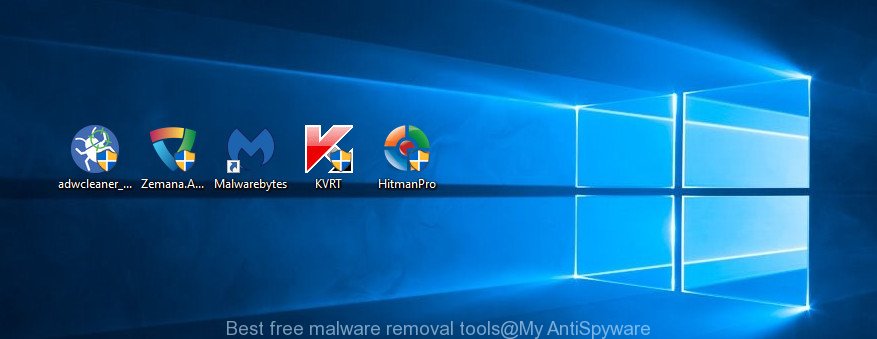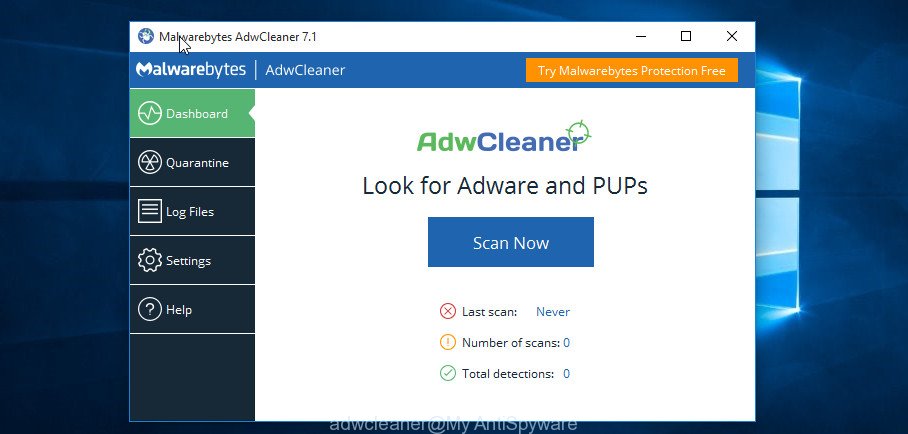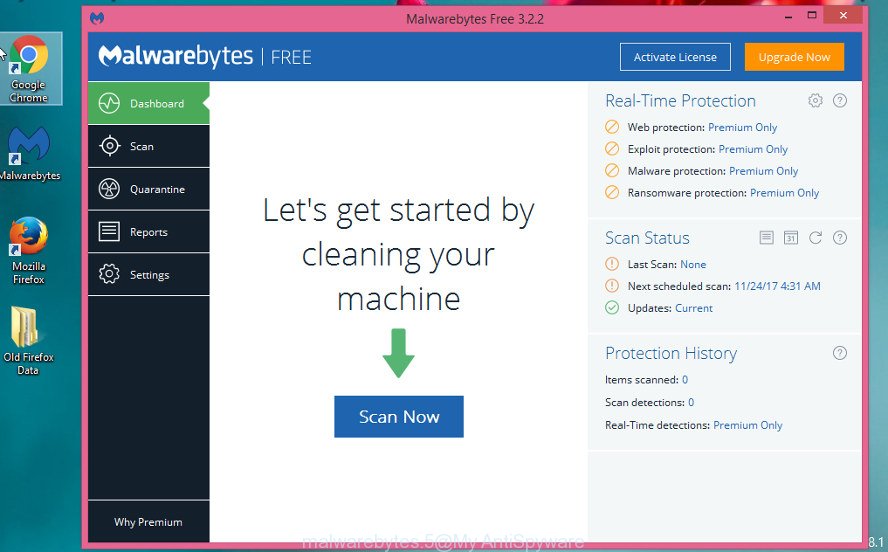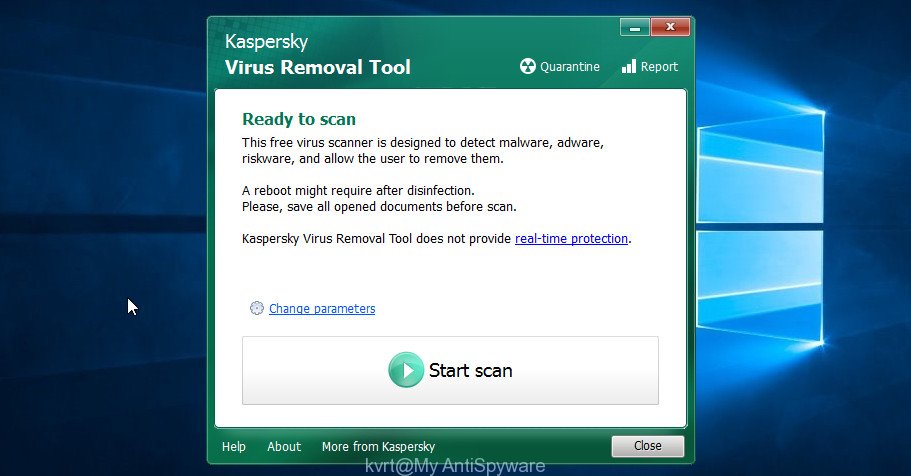Every year, the number and sophistication of malicious software and unwanted programs on the World Wide Web continue to rise. In this article, we’ve evaluated various malware removal tools to determine how effectively they can detect real-world threats such as trojans, adware, PUPs (Potentially Unwanted Programs), as well as emerging security threats and phishing scams. Additionally, we’ve assessed how each tool performs in terms of removing malicious software and its impact on computer performance. So, which are the best free malware removal tools for 2025? Read on to find out.
Here are the Best Free Malware Removal Tools of 2025, available on MyAntiSpyware.com: AdwCleaner, Zemana Anti-malware, Malwarebytes Anti-malware, Kaspersky Virus removal tool and HitmanPro.

Table of Contents
If you are in search of the best free malware removal tool, then you are most likely dealing with the harmful actions of malware. Malware, also known as malicious software, remains a significant security threat in 2025 and continues to evolve rapidly. Modern variants can delete or encrypt files, install unwanted browser add-ons or extensions, change browser settings, display excessive ads and pop-ups, and even act as spyware by collecting personal information that could be shared with third parties. Thus, having malware on your computer is highly undesirable, and it should be promptly removed once detected.
Over the past year, cybersecurity experts have noted a surge in sophisticated ransomware campaigns and “fileless” malware attacks, which operate in your system’s memory to avoid leaving traces on disk. These developments emphasize the need for reliable malware removal tools that stay updated with the latest threats.
How does malware get on your computer in 2025?
Malware can get onto a computer through various means. As cyber criminals adapt and exploit new tactics, the following remain the most common ways to become infected:
- Email attachments or links: Malicious emails can contain attachments or links that, when clicked, install malware onto your computer. Attackers increasingly use social engineering to make these emails appear legitimate.
- Downloading infected software or files: Downloading software or files from untrusted websites or peer-to-peer networks can lead to malware infections. In 2025, fake apps claiming to offer AI functionalities have become a popular lure.
- Visiting infected websites: Browsing websites that have been hacked or are designed to serve malicious content can result in automatic malware downloads. Known as drive-by downloads, these infections require no action other than visiting the site.
- Drive-by downloads. Drive-by downloads occur when malware is automatically downloaded to your computer simply by visiting an infected website.
- Social engineering: Cyber criminals may use persuasion techniques and emotional triggers (e.g., fake urgent messages or offers too good to be true) to trick you into downloading malware or giving away personal information.
- Outdated software and operating systems: Using outdated software (including browsers, operating systems, and plugins) leaves your computer vulnerable to cyberattacks. Even in 2025, many users still run Windows 7 and XP, both of which no longer receive security updates from Microsoft, making them prime targets.
- Removable media: USB drives and external storage devices remain a simple yet effective way for malware to spread if they have been used on an infected system.
Best free malware removal tools for Windows 11, 10, 8, 7, XP
When choosing the best free malware removal tool, consider factors such as detection rate, user reviews, update frequency, user-friendly interface, resource usage, additional features (like real-time protection), and compatibility with your operating system. Look for a tool that can detect and remove a wide range of malware, including new and emerging threats, and receives regular updates.
Because cyber threats in 2025 often use advanced evasion techniques, you may find it beneficial to use multiple tools for an added layer of security. Below are some of the most widely used and effective free malware removal tools:
- Malwarebytes: Malwarebytes is a powerful malware removal tool that effectively combats a wide range of threats, including viruses, Trojans, and spyware. Its real-time protection (in the premium version) and regular database updates help detect the latest threats, including new ransomware and fileless malware.
- Kaspersky Virus removal tool: Kaspersky Virus Removal Tool offers comprehensive security features that not only remove existing malware but also protect against emerging threats. It’s known for its high detection rate, although real-time protection might require a paid version of a Kaspersky product.
- AdwCleaner: AdwCleaner specializes in removing adware, unwanted toolbars, and other potentially unwanted programs (PUPs). In 2025, where junkware often piggybacks on legitimate downloads, AdwCleaner remains a trusted resource to declutter your system.
- HitmanPro: HitmanPro is a second-opinion malware scanner known for its fast scans and high detection rates. It can detect and remove various malicious software, including spyware, Trojans, and viruses. While it offers a free version, real-time protection and advanced features are typically part of the paid package.
- Zemana Anti-malware: Zemana AntiMalware is a quick, lightweight scanner that can detect and remove a broad range of threats. Its cloud-based scanning capabilities help identify the latest malware strains. Although it’s not a full antivirus replacement, Zemana is an excellent supplementary scanner for extra peace of mind.
AdwCleaner
Quickly find and easily remove malware. AdwCleaner is a best free malware removal tool that will allow you to solve these two tasks with ease.
AdwCleaner has been an “up and coming” free malware removal tool since many years. This free tool is among the most downloaded files on the Internet in the Computer security sector. Its user interface is clean and “ease-to-use”. AdwCleaner has one of the fastest and most effective scans among all other similar security tools.

AdwCleaner will easily help you get rid of adware and potentially unwanted applications (PUAs). The downside of the program is that this free tool does not contain an auto-protection module, and can not protect you from new malware. In all other respects it is a very effective malware removal tool and should be in the arsenal of each user who actively uses the Internet.
Zemana Anti-malware
Zemana Anti-malware is an excellent addition to your antivirus software, which helps to remove malware and protect your computer from new malicious programs.
Zemana Anti-malware is another great free malware removal tool. It is created to find and remove malicious programs of various types. If you want to protect your computer as much as possible, first of all we recommend you to install a classic antivirus software, and use Zemana Anti-malware to detect and remove malware.

This is an excellent malware removal tool that appeared not so long ago, but has already earned respect among security experts. Zemana Anti-malware can analyze suspicious programs (so-called heuristic analysis) to see if there are signs in their behavior that are typical for malicious software of various types, including adware and browser hijackers. This means that you will be protected from the latest malware, including the option when your computer is the first victim hit by a new malicious program, and accordingly, its description is not yet in the database of known threats of Zemana Anti-malware. In any case, this malicious program will be quickly detected and safely removed from your personal computer. All this happens automatically in the background.
We recommend that you scan all downloaded files with Zemana Anti-malware before launching them. This will allow you to prevent malware from infecting your computer, as it will block them before the initial start. And as you know, it is better to prevent malware than to remove it later.
As already mentioned, if you already have an anti-virus program, paid or free, and you trust it completely, then you can additionally install Zemana Anti-malware. This malware removal tool will not cause conflicts and will work as an add-on, which will greatly increase the security of your computer.
Malwarebytes Anti-malware
Malwarebytes can easily replace your antivirus or work on your computer with it, thereby significantly increasing the operating system’s protection from malware.
Malwarebytes lab has been among the best malware removal developers in the world for over a decade and at once Malwarebytes 3.6 (2020) only tones up that reputation. Malwarebytes Anti-malware is one of the most efficient malware removal tool in the world today. It boasts a great user interface with powerful malware removal features. There are no complaints about Malwarebytes’s potency or ease-of-use.

Despite its huge capabilities, this program can very quickly scan your computer your computer for malware, having one of the fastest scanners among all antivirus programs. With it, you can forget about the fact that scanning the entire computer can be performed for half a day or more. Any malware on your computer will be detected and quarantined very fast.
Malwarebytes program is not intrusive, but it will always warn you when trying to run malicious programs or when the running program tries to perform suspicious actions. Additionally, when you install it, you get all the features for 14 days for free, and in the future you have a choice. Buy a license and enjoy all the features, or use a free version of the program. In the free mode, the automatic protection module will be disabled, but Malwarebytes, without any limitations, will check your computer at your request and will be able to remove malware as before.
Kaspersky Virus removal tool
Kaspresky Virus Removal Tool (KVRT) is a free malware removal tool based on the core of Kaspersky Anti-Virus. This malware removal tool will give you full control over manual scanning for malware, adware and other unwanted software.
Kaspresky Virus Removal Tool is the most effective free malware removal tool on the Internet nowadays. Kaspresky Virus Removal Tool over again has rendered an excellent tool that is extremely efficient, and easy to use. The effectiveness and great thing about this utility is its quick scanning and superior Kaspresky Lab® Technology that detects ransomware, trojans and malware before it has been reported. Its user interface is easy to use for the every home user.

If you suspect that the downloaded file may contain malicious software, then please check it with KVRT. This malware removal tool will analyze it, and on the basis of this analysis will recommend whether it is safe or not to run it. This is very easy and convenient, as this program performs scanning very quickly and practically does not consume computer resources. This is especially useful if you are using a computer or a virtual machine with limited resources.
Although you must run the scanning process yourself, this does not reduce the program’s ability. KVRT is a great free malware removal tool that we recommend to keep on your computer, as it will help you to quickly scan your computer, find and remove malicious software.
HitmanPro
HitmanPro is one of the oldest names in the malware removal industry, with years of experience and fame. It is an ideal tool for removing malware, which does not require installation on a computer.
If your computer has been infected with malware and you are faced with the fact that your system is very slow, or the installation of antivirus software is blocked, as well as when you need a malware removal tool that can be stored on a flash drive, then the HitmanPro is perfect for you. This tool that does not require installation on a computer and can be started from a regular USB flash drive or any other external device.

HitmanPro already has a database with malware signatures, but for its update it requires an Internet connection. Immediately after the startup, the program will check the computer for malware, and then allow it to be quarantined. This will prevent malicious programs from harming your system.
How to remove malware in 2025
If your computer has been infected with malware, here are some updated steps you can take to help remove it and protect your system in the future:
- Download a malware removal tool. Download a reputable and effective anti-malware tool to thoroughly scan your computer. In 2025, many security companies offer advanced free versions that can detect and remove even the latest ransomware and zero-day threats. Popular choices include Malwarebytes, Avast, and Microsoft Defender.
- Disconnect from the internet. Disconnect your computer from the internet to prevent the malware from communicating with its command and control server and spreading to other devices on your network. This step is crucial for stopping sophisticated threats like ransomware from further encrypting data.
- Boot into Safe Mode and scan your computer. Boot your computer into Safe Mode, which will prevent most malware from running, making it easier to remove. Run a full scan with your chosen anti-malware tool and follow the recommended steps to quarantine or remove any malicious files.
- Restore your system if necessary. If the malware cannot be removed or has altered important system files, consider restoring your system to a previous state using a system restore point or a reliable backup. Ensure your backups are stored offline or in the cloud, so they aren’t corrupted by malware.
- Update and patch your software. After removing the malware, be sure to update and patch your operating system, browsers, and all other software. Modern malware often exploits unpatched vulnerabilities, so keeping software current is one of the best ways to prevent re-infection.
- Keep your software and anti-virus software up-to-date. Regularly update your security software and enable real-time protection features. Many tools now include machine learning or heuristic analysis to detect new threats before they become widespread.
- Strengthen your credentials and enable multi-factor authentication. After a malware incident, change the passwords to all critical accounts (especially online banking, email, and social media). Use unique, strong passwords for each site and enable multi-factor authentication (2FA/MFA) wherever possible to reduce the risk of credential theft.
It is also important to practice safe computing habits, such as avoiding suspicious websites and email attachments, using strong passwords, and keeping your anti-virus software and other security software up-to-date. In 2025, additional measures like using password managers, enabling DNS filtering, and installing reputable ad blockers can go a long way in protecting your devices from modern cyber threats.
Recent News & Updates
- Rise of AI-Powered Cyberattacks: Hackers are increasingly leveraging AI-driven bots to craft more convincing phishing emails and discover new system vulnerabilities faster. Ensure your malware removal tool offers frequent updates to keep pace with these evolving threats.
- Windows 10 End of Life: Microsoft has announced that certain editions of Windows 10 will begin reaching end of support in 2025. Make sure to update your OS to a supported version (like Windows 11 or newer) to maintain security patches and updates.
- Firmware Attacks on the Rise: Malware is increasingly targeting firmware and hardware controllers, making it harder to detect with standard antivirus solutions. Tools offering deep scanning and firmware protection features provide an added layer of defense.
- Strengthening Multi-Layered Protection: Experts recommend using more than one security solution—such as pairing an antivirus with an anti-malware scanner—for maximum coverage. This layered approach is particularly useful against complex threats like rootkits and fileless malware.
Conclusion
In 2025, malware remains a persistent and evolving threat, but the good news is there are numerous free tools available to help you detect and remove malicious software. Whether you’re using Windows 11, 10, 8, 7, or even XP (despite its discontinuation of support), it’s crucial to stay on top of software updates and use reputable security tools. Combining multiple solutions can further enhance your protection, especially as cyber criminals develop new attack methods.
Stay vigilant, use strong antivirus and anti-malware tools, and keep your software up to date. With the right strategies, you can significantly reduce the risk of malware infections and maintain a safer computing environment.


















how to restore my files that were infected with .taqw (i found out that it’s online encrypted 🙁
Use the following guide: https://www.myantispyware.com/2023/08/15/how-to-remove-taqw-ransomware-decrypt-taqw-files/
How to restore the files that have attacked by wwza ramsomware?
Use the following guide: https://www.myantispyware.com/2023/09/17/how-to-remove-wwza-ransomware-decrypt-wwza-files/
How to restore the files that have attacked by zpww ransomware
how to restore my files that were infected with .Jzeq 🙁
Use the following guide: https://www.myantispyware.com/2023/11/08/how-to-remove-jzeq-ransomware-decrypt-jzeq-files/
how to restore my files that were infected with .fate
Use the following guide: https://www.myantispyware.com/2022/11/15/how-to-remove-fate-ransomware-decrypt-fate-files/
How to decrypt files from infected by jawr
Use the following guide: https://www.myantispyware.com/2023/11/29/how-to-remove-jawr-ransomware-decrypt-jawr-files/
bütün ofis pdf ve fotoraflar cdaz ile kilitlendi lütfen yardım edermisiniz?
Use the following guide: https://www.myantispyware.com/2024/01/07/how-to-remove-cdaz-ransomware-decrypt-cdaz-files/
— help me, decrypt ransomware .cdtt file , Thanks sir !
Use the following guide: https://www.myantispyware.com/2024/01/11/how-to-remove-cdtt-ransomware-decrypt-cdtt-files/
How to recover files that were infected with.foza
How to recover file affected by .foza
Use the following guide: https://www.myantispyware.com/2023/04/25/how-to-remove-foza-ransomware-decrypt-foza-files/
please I need help with .watz ransomware
Use the following guide: https://www.myantispyware.com/2024/06/04/how-to-remove-watz-ransomware-decrypt-watz-files/
hlas please
Use the following guide: https://www.myantispyware.com/2024/09/10/how-to-remove-hlas-ransomware-decrypt-hlas-files/